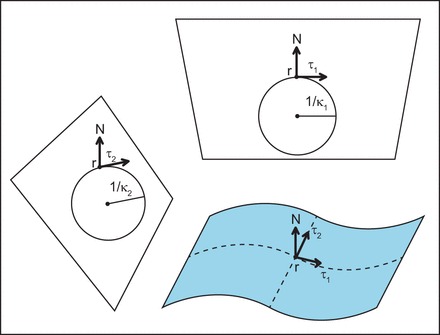Fig. 4.

Continuum modeling of the membrane. Theory can help us understand how membranes behave at the continuum level. The membrane can be represented as a 2-dimensional surface; this representation allows us to think about the mechanical properties of the membrane. The 2 principal curvatures κ1 and κ2 are calculated with methods of differential geometry, and represent the local change in the shape of the surface. The 2 principal curvatures of the membrane have been used to describe the curvature-dependent elastic energy of the membrane. In mechanical equilibrium, all forces acting on the membrane must be balanced, and therefore the energy of the membrane must be minimized. This approach relates the energetics of the membrane to the shape of the membrane at mechanical equilibrium.
